Golf's great mustache revival: A journey through facial hair on the fairway
5 Min Read
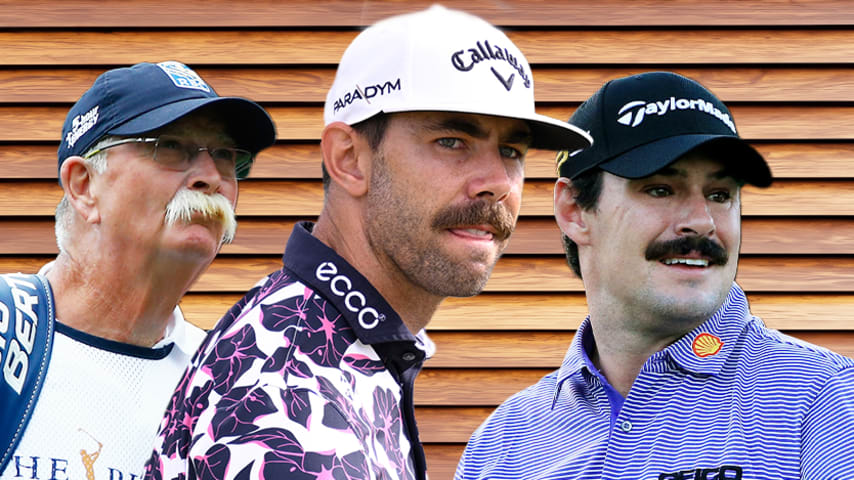
The golfer's mustache is an accessory that transcends generations.
Written by Jimmy Reinman
From Fluff to Fowler, we review the history of mustaches on the PGA TOUR ahead of the Valero Texas Open
The modern golfer’s appearance serves as an ever-evolving canvas of self-expression.
From Arnold Palmer to John Daly to Tiger Woods, legends of the game have left their mark on the course through distinctive fashion and style choices, resonating through the PGA TOUR to this day.
In recent years, there has been a noticeable resurgence of a particular form of personal expression among the PGA TOUR’s finest: the mustache. This revival reflects a renaissance, perhaps, of dignified and classic masculinity that once enjoyed the spotlight in the twentieth century.
As the PGA TOUR heads to the Texas Hill Country for the Valero Texas Open, it seems fitting to examine this phenomenon as we promenade through cowboy country. So, crank up the Alan Jackson and queue your favorite episode of "Walker Texas Ranger" as we explore the history of the mustache at the highest level of golf.
The 1970s and 1980s witnessed a strong affinity for the mustache, with celebrities like Burt Reynolds and Freddie Mercury epitomizing the trend. Naturally, this style found its way into the world of professional golf. Pioneers like "The Walrus" Craig Stadler, with his billowing gray facial hair, and legendary caddie Mike "Fluff" Cowan, sporting his distinctive lip bristles, established the mustache as a notable feature.
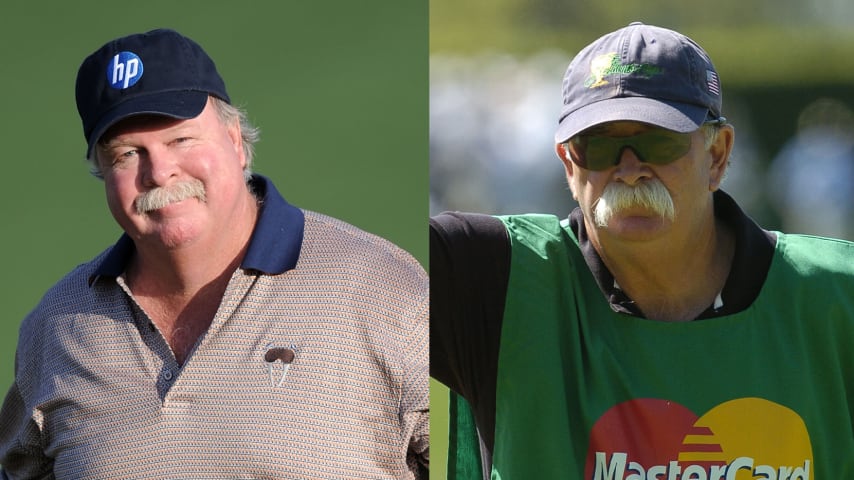
Craig Stadler and Mike "Fluff" Cowan were pioneers on the forefront of mustache style on TOUR. (Credit A. Messerschmidt and Harry How/Getty Images)
When questioned by "The Caddie Network" about when he first donned his iconic mustache, Fluff responded nonchalantly, "I just grew it for the heck of it. I'd say 1984, because I shaved it then and almost immediately grew it back, and it's still here." Stadler and Cowan built the groundwork upon which generations of mustachioed golfers would thrive. These men walked so names like Corey Pavin and Bart Bryant could run.
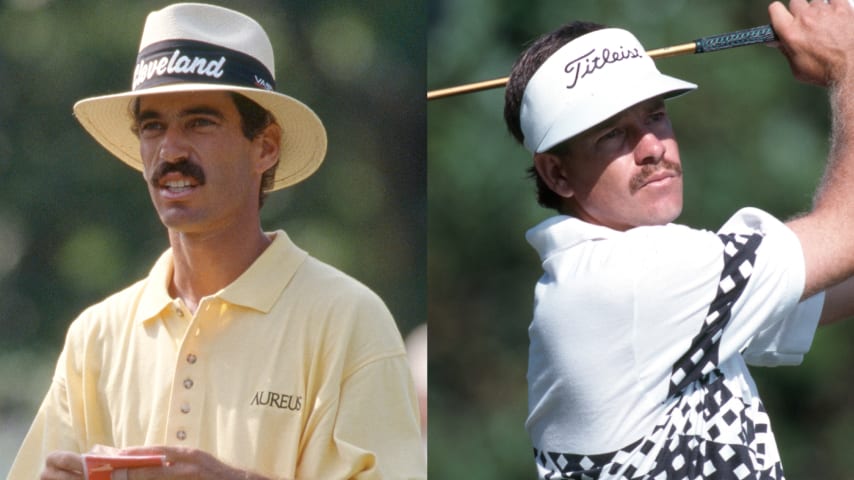
Corey Pavin and Bart Bryant combined rugged and refined with their mustache styles. (Credit PGA TOUR Archive)
However, the popularity of mustaches waned in the mainstream during the 2000s and 2010s. Cleaner, sleeker aesthetics took precedence and the mustache was cast to the wayside in favor of a more athletic look. Nonetheless, figures like Andres Gonzales and Johnson Wagner, who now graces television audiences with his follicle talents, provided a glimmer of hope for mustache enthusiasts.
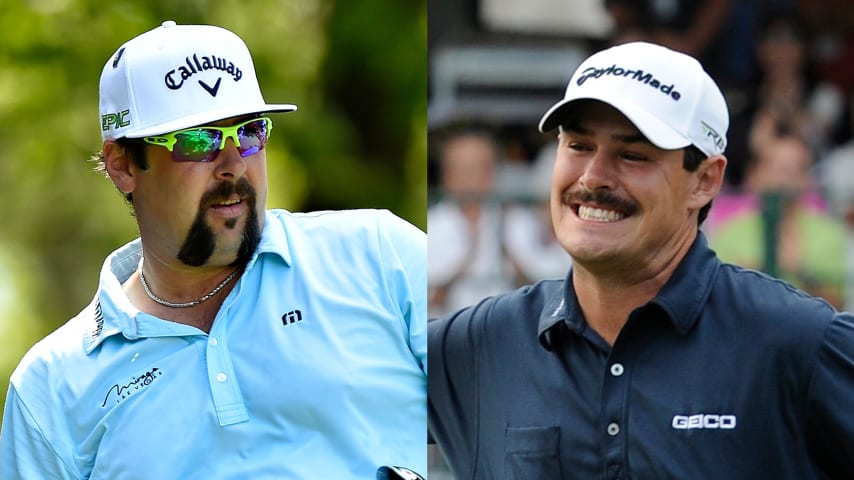
Andres Gonzales and Johnson Wagner shined as mustaches grew into the twenty-first century. (Credit Minas Panagiotakis/Getty Images and Chris Condon/PGA TOUR)
This brings us to the present era, where mustaches have experienced a comeback in popularity. Whether fueled by nostalgia or the cyclical nature of fashion trends, the modern golfer has embraced the mustache as a symbol of personal expression. Rickie Fowler, known for his bold fashion choices, notably embraced the mustache trend in 2018, signaling its reawakening across championship golf into the 2020s.
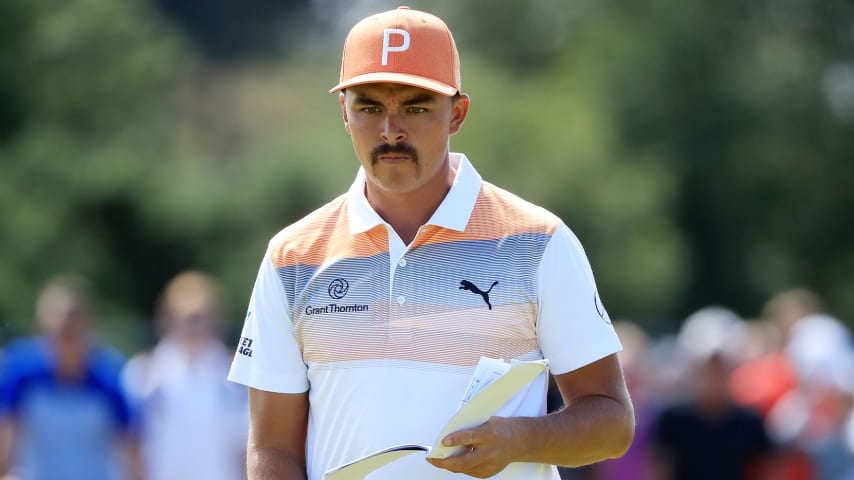
Rickie Fowler stunned the scene at the 2018 Open Championship with his Fu Manchu-style mustache. (Sam Greenwood/Getty Images)
Leading this contemporary wave of mustache enthusiasts is South African style trendsetter and PGA TOUR-winner Erik van Rooyen.
"I've kind of done it through Christmas the last few years, just to keep up the spirit, I guess," he remarked in a 2022 interview with NBC Sports. “It’s kind of stayed through the new year; we’ll see how long it keeps going for.”
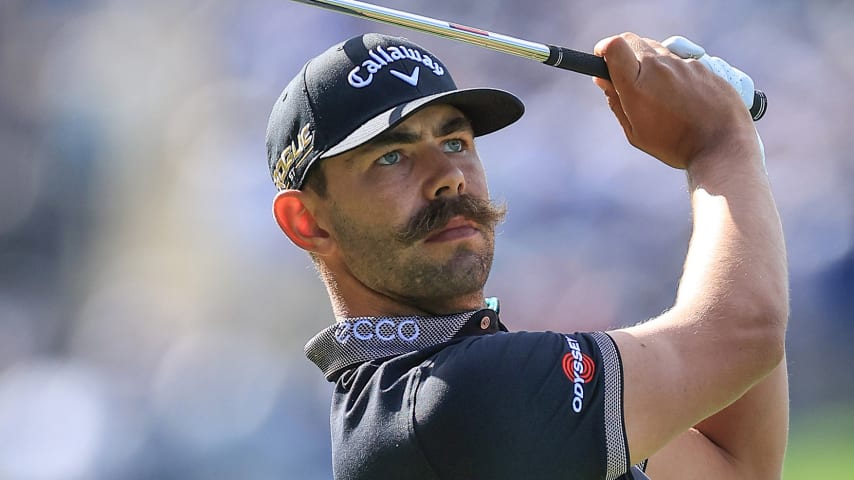
Erik van Rooyen showcases a unique style in both his game and facial hair. (David Cannon/Getty Images)
He has kept it going for the better part of two years. While van Rooyen will occasionally trim down and allow the beard to grow in, he eventually succumbs to the temptation and returns to looking like a shortstop for the 1920 Boston Braves.
“I brush it, shampoo, condition," he said. "You got to treat it well, otherwise it kind of bites back. So, yeah, I’ve got a little wax that I throw in in the morning.”
Van Rooyen’s vaudeville aesthetic was in full form during his win last FedExCup Fall at the World Wide Technologies Championship.
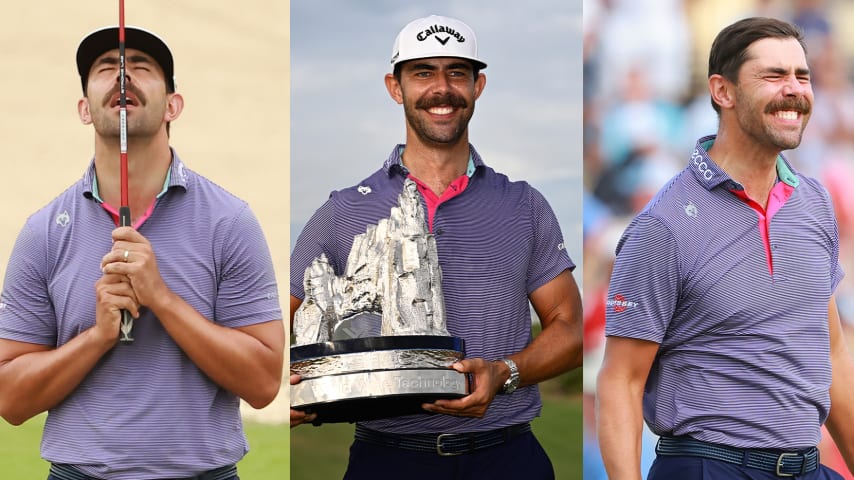
Erik van Rooyen's mustache was in full bloom during his most recent PGA TOUR win at the 2023 World Wide Technologies Championship. (Credit Hector Vivas/Getty Images)
Van Rooyen trimmed down his mustache following a T2 finish at the Cognizant Classic in The Palm Beaches. Coincidentally or not, he failed to notch a top-20 finish during the remainder of the Florida Swing, prompting speculation from this author about the influence of facial hair on athletic performance.
Playoff beards have long been a powerful tradition in the world of hockey, expanding into baseball and beyond. Athletes have no reservations about personal superstitions directly affecting their performance on the field. Golf is already one of the most personalized and expressional sports – the idea of facial hair directly correlating to performance doesn’t seem like the most outlandish explanation to assume.
On the other side of the coin as van Rooyen is PGA TOUR rookie Chandler Phillips. A Texan through and through, Phillips sported a tremendous mustache during his time at Texas A&M University and on the Korn Ferry Tour.
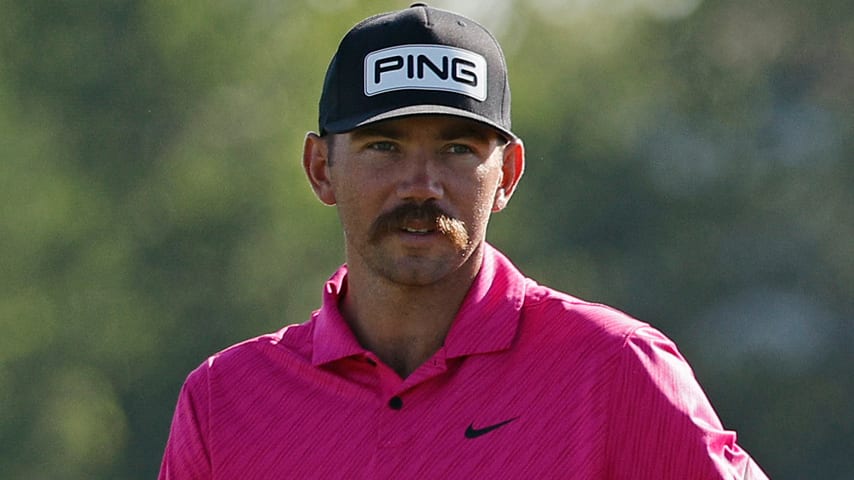
Chandler Phillips showcases his Texas roots with a dastardly display from his days on the Korn Ferry Tour. (Mike Mulholland/Getty Images)
While Phillips, a Huntsville, Texas, native, failed to crack the top 20 until the Valspar Championship, his strong showing at the event coincided with the absence of his trademark mustache. Phillips dismissed any correlation between his grooming choices and his performance, emphasizing his lack of superstition regarding facial hair.
“I was planning on shaving it,” he told PGATOUR.COM. ”I was looking at the stache and I just shaved it. It will come back, it won’t take long. I’m not superstitious about it, the truth is I keep the mustache because without it I look 12.”
On the other hand, fellow rookie Harry Hall subscribes to a routine involving beard growth and removal as a symbolic gesture of readiness for victory.
“I kind of have a little thing from over the years where I grow a beard from like December to February then shave it off to get ready for the middle of the season, thinking that I don’t want to have a beard when I’m holding the trophy when I look back in 20 years time,” he explained at this year's PLAYERS Championship.
"When I get rid of the beard and just leave the mustache, it's a sign that I'm ready to win.”
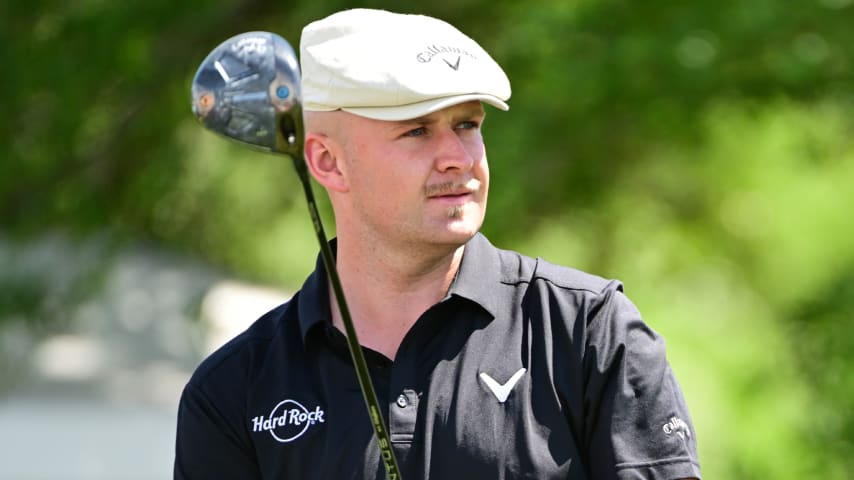
Harry Hall's blonde mustache evokes a dignified yet bespoke influence that compliments his choice of traditional driver's cap. (Credit Logan Riely/Getty Images)
As our journey through the history of the golfer's mustache comes to a close, we find ourselves not merely recounting a trend in facial hair, but rather witnessing a reflection of the evolving identity within the game of golf itself. From its pioneering days to its contemporary resurgence, the mustache serves as both a symbol of individual expression and a potential harbinger of performance superstition.
As rookies like Phillips and Hall navigate their relationship with facial hair, we are reminded that while the mustache may come and go, its significance in the tapestry of golf's culture remains ever-present. Just as the game continues to evolve, so too does the canvas upon which its players express themselves, whether through fashion, style or the humble mustache.





